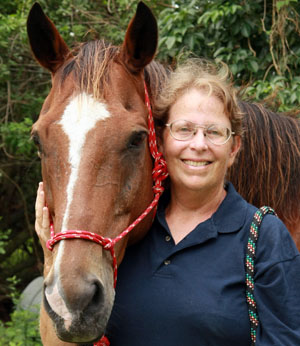TAILS FROM THE TRAILS
Imagine being an up-and-coming rider invited to spend five days in the presence of one of the truly great names in riding — and in the fabulous environs of the Palm Beach International Equestrian Center in Wellington. Now check to see if you’re just dreaming. For a dozen very lucky and talented young riders, this was no dream.
They spent the better part of Wednesday, Jan. 2 through Sunday, Jan. 6 doing just that.
These were no ordinary equestrians. They included the USHJA North American Junior and Young Rider Individual Jumping Champions at the 2012 Adequan/FEI North American Junior & Young Rider Championships, Champion and Reserve Champion from the 2012 USEF/Platinum Performance Talent Search Finals both East and West, Individual Champion at the 2012 Randolph College/USEF National Junior Jumper Championship, two riders from the USHJA Emerging Athlete Program, and three wild cards chosen by famed trainer George Morris.
The sessions included both mounted clinics with Olympians George Morris and Anne Kursinski, and related classes covering topics such as stable management, veterinary and farrier care by experts such as Dr. Tim Ober, U.S. Show Jumping Team veterinarian, and farrier Dean Pearson. The aim: develop a pipeline of young “horsemasters” for future U.S. Equestrian Teams.
This was the seventh time the clinic was offered by USHJA and Adequan. The USEFNetwork.com presented by Smartpak hosted wall-to-wall coverage, and the public was welcome to audit all mounted and educational sessions at no charge.
I watched most of the second group of riders (six rode at a time) on Friday, Jan. 4 from 10 until a bit after noon. About 50 people sat on chairs in the covered areas beside the ring, watching and listening.
They started, as always, with flat work, progressing to cantering serpentines with flying changes. Morris had specific advice for each rider.
“Stretch your spine, rather than bracing your back in the downward transition,” he told her.
Some of his pronouncements seemed to be oxymorons, which he himself pointed out.
“Turning exercises help get a horse straight.”
“Whatever you teach a horse, he’ll later use against you.”
“Martingales don’t help the horse, they’re only there for the rider.”
“Everything in riding is a paradox, a contradiction.”
The jumping began with a gymnastic exercise: a serpentine through a series of six cavaletti. “The beauty of gymnastics is that they teach us to see every situation, such as a short or long distance,” he said. “You can set jumps up and let the horse use them to learn. Riders must learn to trust in their horses.”
Morris explained that jumps should not be beyond a horse or rider’s ability, but they should also not be comfortable. “Practice what’s not comfortable,” he said. “That’s how you learn and grow. If it’s comfortable, don’t practice it.”
The riders were soon jumping sizable fences, doing them first one way, then another, in different order, sometimes stopping in the middle of a line and facing the horse into the rail surrounding the ring. When the riders were invited to create their own courses, using the jumps set up in the ring, they were sometimes allowed to continue, sometimes asked to repeat a jump, and sometimes stopped.
“Start simple, with a single fence, and then get more complex by doing a combination,” he advised. “Always, simple to complex. Don’t start too ambitious.”
The last jump the riders practiced over was a wide water jump. By the end of the session, everyone had successfully negotiated it. The riders took their well-deserved rest, heading their mounts back to the barn.
“Holding these sessions and teaching these youngsters each year is very enjoyable,” Morris said. “I find it very rewarding. These are not ordinary riders; this is like college, post-graduate work. These are the riders who will take our sport forward and be the next professionals representing us.”
Even for those of us who will never aspire to such heights, the clinic was fascinating, informative and inspiring. I’ll definitely sit in again next year.








